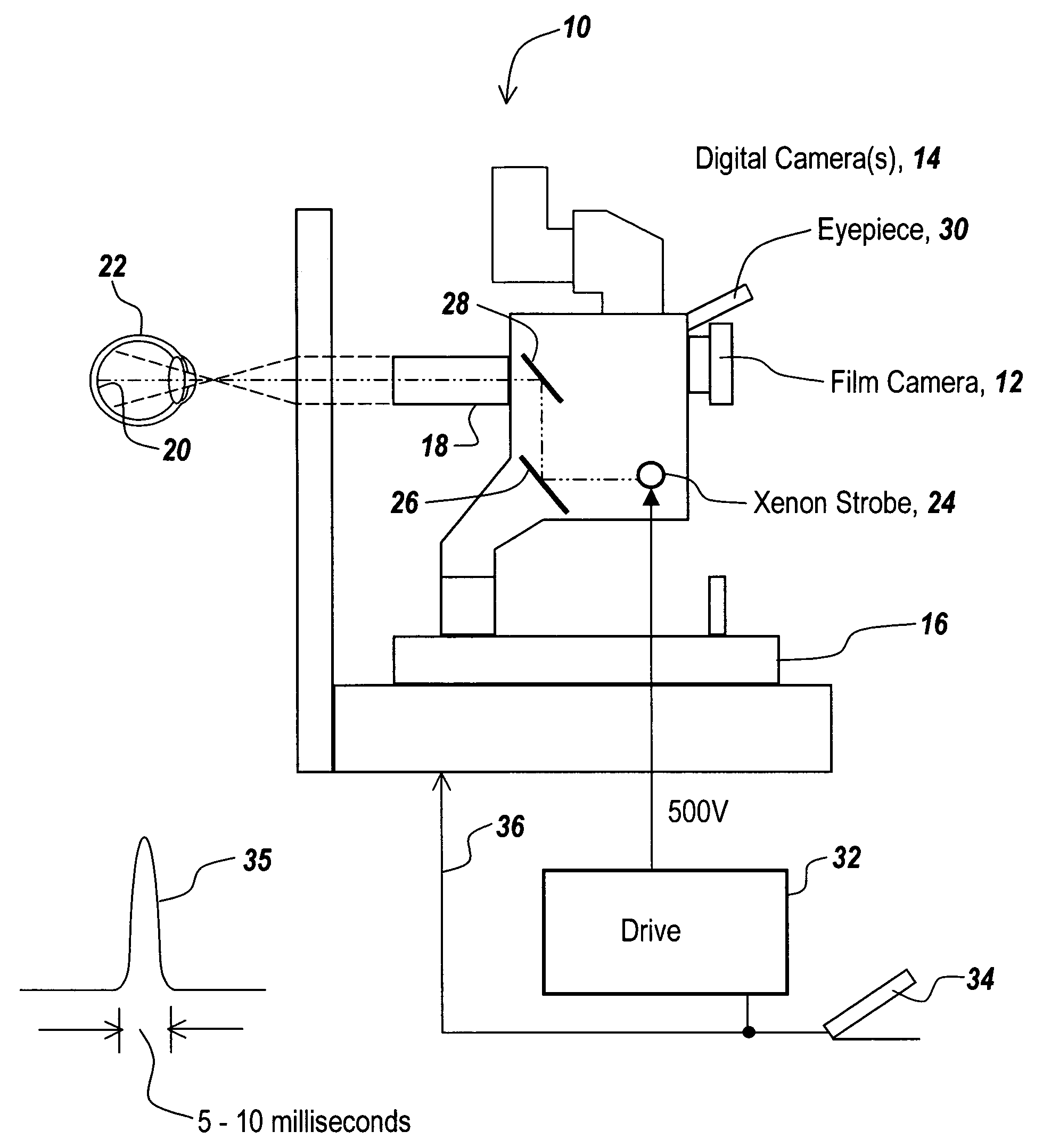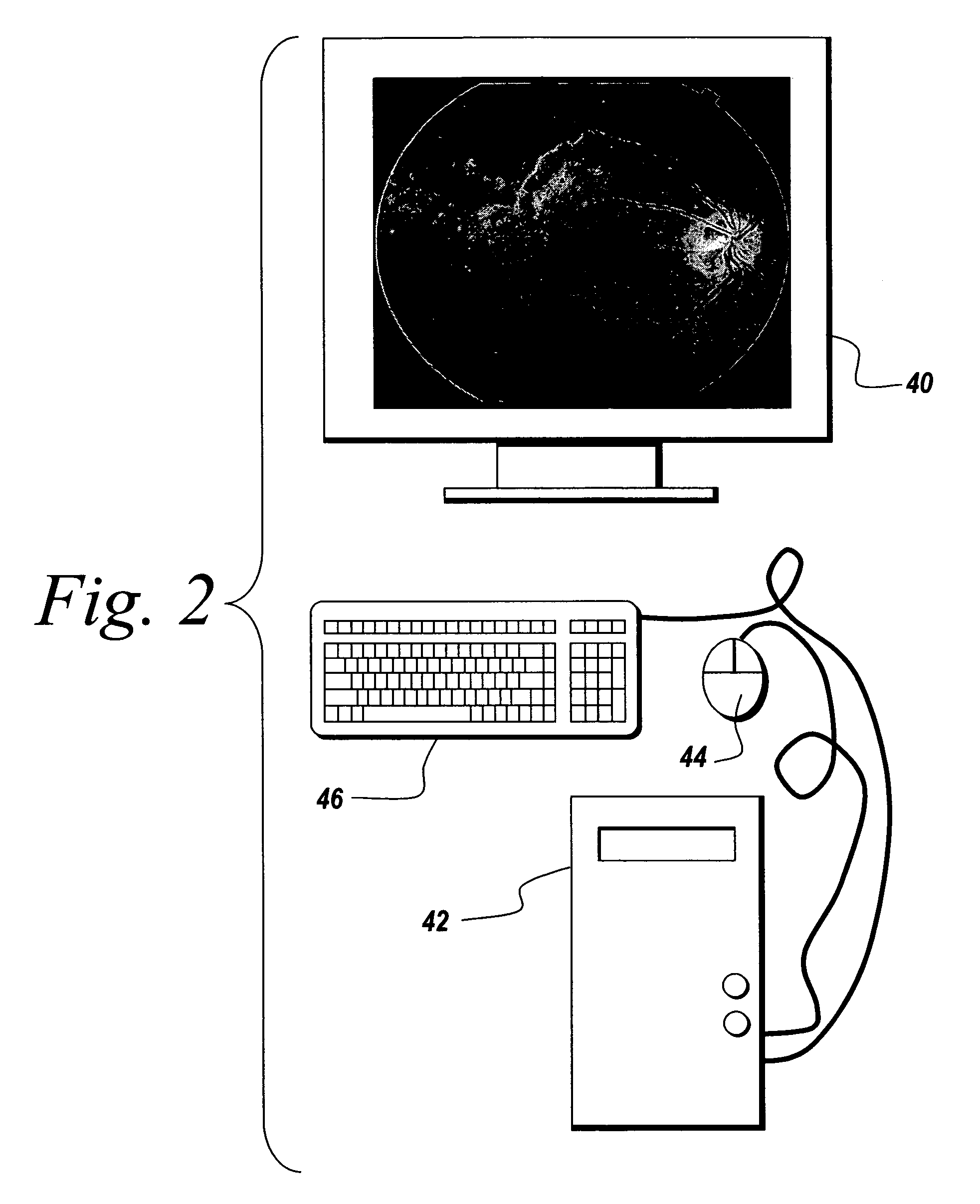Grayscale redistribution system to improve retinal imaging by reducing the effect of a highly reflective optic nerve
a redistribution system and retinal camera technology, applied in the field of retinal cameras, can solve the problems of discomfort for patients, simply drowning out optic nerve detail, and even more difficult retinal imaging, and achieve the effects of capturing both optic nerve and retina detail, improving retinal camera picture quality, and allowing observation of retinal detail
- Summary
- Abstract
- Description
- Claims
- Application Information
AI Technical Summary
Benefits of technology
Problems solved by technology
Method used
Image
Examples
Embodiment Construction
[0050]Referring now to FIG. 1, prior to discussing the subject retinal image optimization system, the operation of a typical retinal camera is discussed. Here a retinal imaging camera 10 includes a film camera 12 and a digital camera 14 mounted on a stand 16 such that an imaging system 18 images the retina 20 of eye 22 onto the focal planes of cameras 12 and 14. In order to illuminate retina 20, a xenon strobe lamp 24 has its output redirected by mirrors 26 and 28 out through imaging system 18 so that the output of xenon strobe 24 illuminates retina 20. Note that an eyepiece 30 is used for focusing both the digital and film camera as well as directing the optics to the appropriate portion of the eye.
[0051]A precise maximum strobe output includes the use of drive 32 that incorporates a power supply for delivering several hundred volts to the xenon strobe. As illustrated, this is accomplished by delivery of a several hundred-volt pulse 35, with a pulse width of between 5 and 10 millis...
PUM
 Login to View More
Login to View More Abstract
Description
Claims
Application Information
 Login to View More
Login to View More - R&D
- Intellectual Property
- Life Sciences
- Materials
- Tech Scout
- Unparalleled Data Quality
- Higher Quality Content
- 60% Fewer Hallucinations
Browse by: Latest US Patents, China's latest patents, Technical Efficacy Thesaurus, Application Domain, Technology Topic, Popular Technical Reports.
© 2025 PatSnap. All rights reserved.Legal|Privacy policy|Modern Slavery Act Transparency Statement|Sitemap|About US| Contact US: help@patsnap.com



